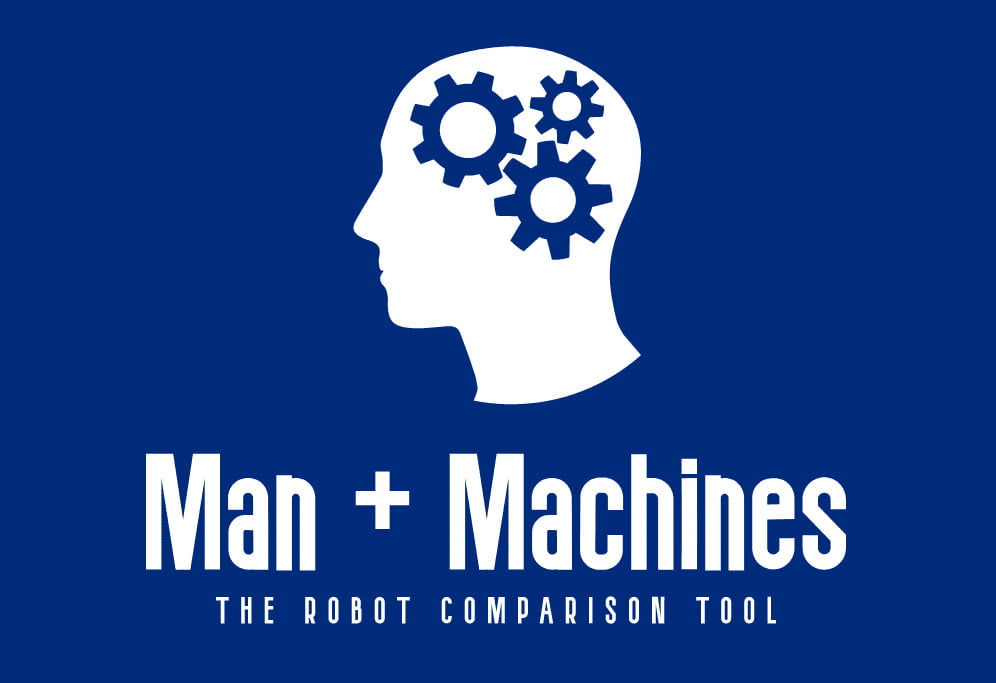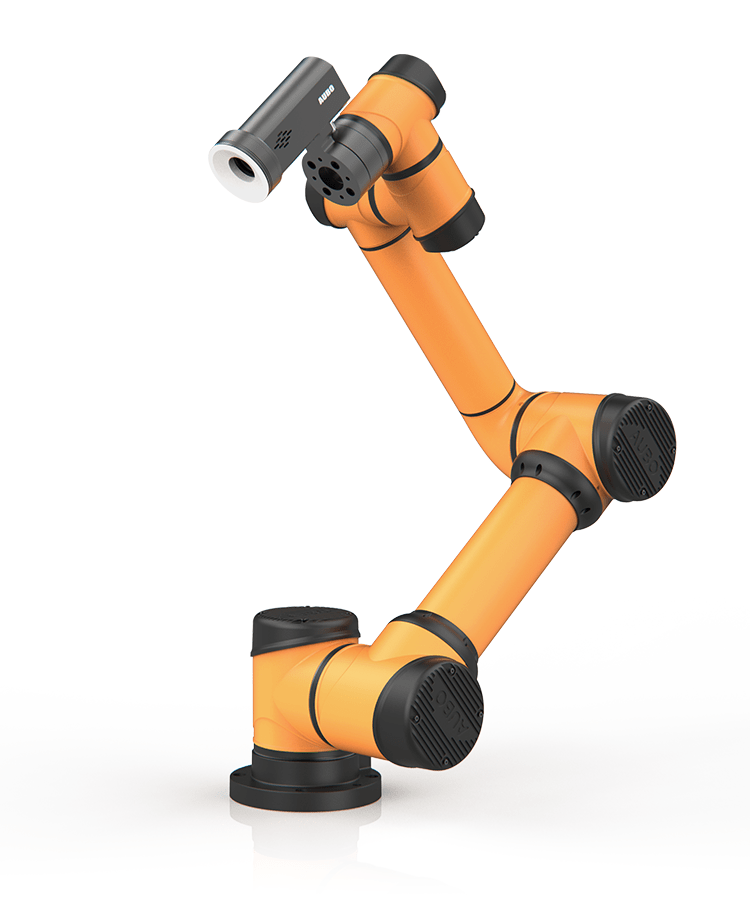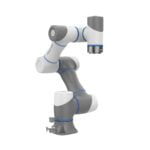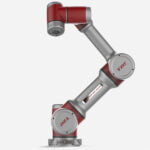What is the story behind Aubo cobots?

Aubo is a startup that has built on years of development and research to design innovative cobot models. They launched their Aubo-i series in 2016 to capture not only the Asian market, but also the US market.
The strengths of Aubo-i robots lie in their versatility and modularity. The cobot components can be easily disassembled and reassembled, and they can be adapted to many applications. The programming system is also open to many coding languages and accessories. Aubo also offers an ergonomic interface to make automation accessible to any worker.
Since its first model, Aubo has greatly expanded its range, from the Aubot i-3 to the Aubot i-16. Thanks to this, the company can meet the different production needs of small and medium-sized industries.
But does the i-series really stand up against more competitive cobotic models?
How to use the Aubo i-series?

After unpacking the robot, you can set up the robotic arm on the mounting base and connect the control box and the learning pendant. You can then turn on the interface and start to configure working settings.
In the configuration menu, you need to define the initial position of your robot and calibrate the added end effectors. For the latter, you need to calibrate the axis of motion (kinematic properties) and the load and center of gravity of the tool (dynamic properties).
You must also define the reference axis of your robotic arm, and choose the safety mode (manual or automatic) in the specified menus.
When you have finished the calibration, you can then start programming a task. To do this, go to the Project section, create a new program and teach the robot positions. You can move the robot with the manual controls and define a working position. You can also stay in the free mode and move the robot by hand.
When you have finished coding a movement or an action, you need to add logical conditions to complete your program (loop, IF, Break, Continue).
When you have finished your program, you can save it and run it through a number of loops.
What are the possible applications of the Aubo series?

Thanks to its modularity and its compatibility with many end effectors, Aubo can handle a variety of applications:
- Pick & Place
- Screwing
- Quality control and labeling
- Assembly and sorting of parts
- Painting and material distribution
- Machine loading and unloading
What does the interaction with Aubo-i really look like ?

As the market leader in China, the Aubo-i series has many advantages for small and medium-sized industry.
First, the Aubo cobots demonstrate excellent versatility. They have a very open software environment and compatibility with many communication protocols. This allows anyone to connect an API, experiment with new external tools, or test and share original applications. Their broad technical specifications also allow them to perform tasks in a variety of configurations. The structure of these cobots makes them even easy to disassemble, for any new deployment, repair, or maintenance.
Secondly, the collision and force sensors are relatively accurate and improve the robot’s performance in specialized applications. Moreover, it supports any vision module to perform tasks such as sorting or labeling parts. Above all, this sensitivity makes interaction with Aubo particularly safe, complying with recognized safety standards.
Finally, the user interface, although less user-friendly than that of competitors, stands out for the ability to deeply customize the work process. Besides manual commands and hand-guiding, you can code tasks with advanced logic functions. You might also appreciate the built-in 3D simulator to test and plan tasks remotely.
Our Ratings
Overall
-
Performance
-
Usabillity
-
Safety
-
Versatility
What to make of the Aubo i series?
All in all, the Aubo cobots are very versatile automation tools when they are in the right hands. They are particularly aimed at advanced users, experts in programming, who will leverage the modularity and customization possibilities of the software environment. However, they can also suit more novice users, who can code standard applications after some practice.




